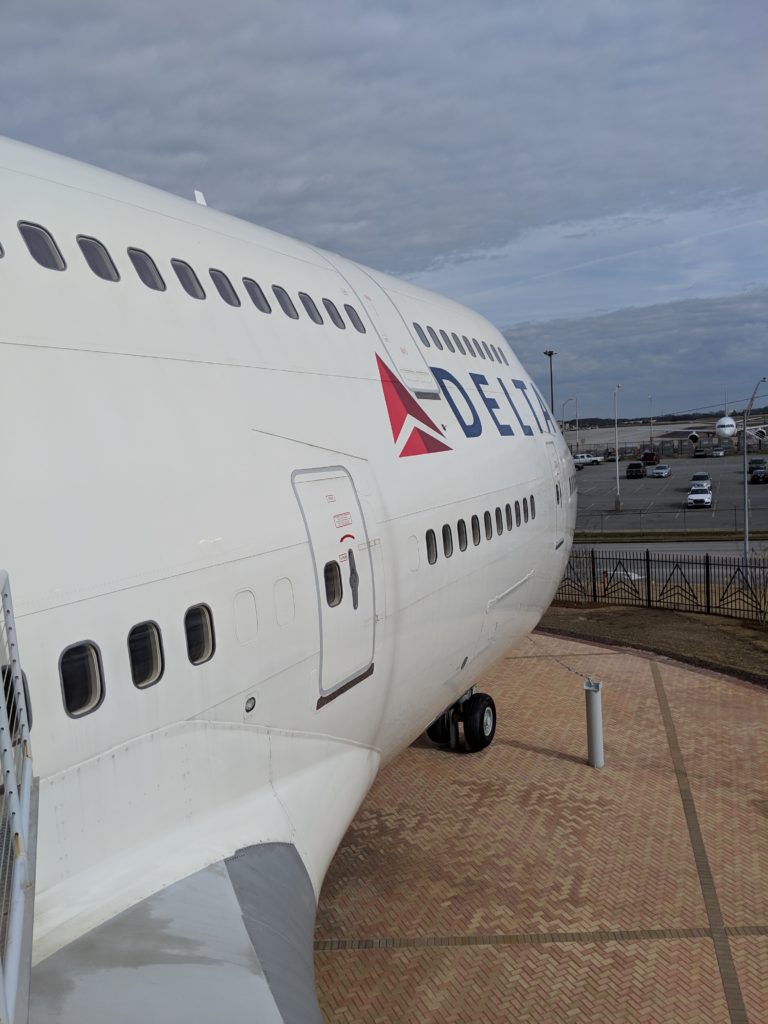
Most established airlines these days have a museum associated with them. Southwest has a museum near Love Field in Dallas, American has the CR Smith museum in Ft. Worth, and United has a web page that looks like it was last updated in 2004. The best of these is Delta’s Flight Museum in Atlanta, Georgia where not only are historical Deltas aircraft on display, but there’s even a 747 in the parking lot that is open to visitors. And this specific 747 has a heck of a history.
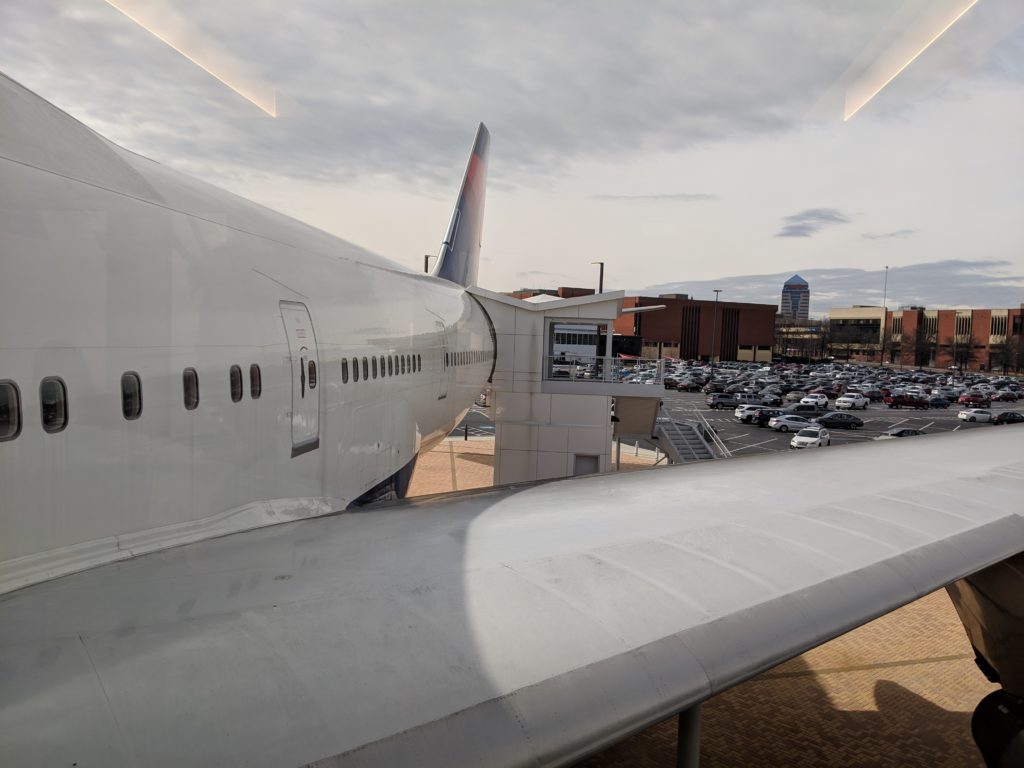
I’d like to point out for a second how unique this is. There are a couple museums in the world where aircraft are open for public display including the interior, but that’s definitely not the norm. I can probably count on one hand the number of places in the United States where you can climb inside a historical aircraft and not just a sliced out section of one. Delta actually has two aircraft open to the public like this — this 747 and their 767 in their hangar — which makes it all the more special.
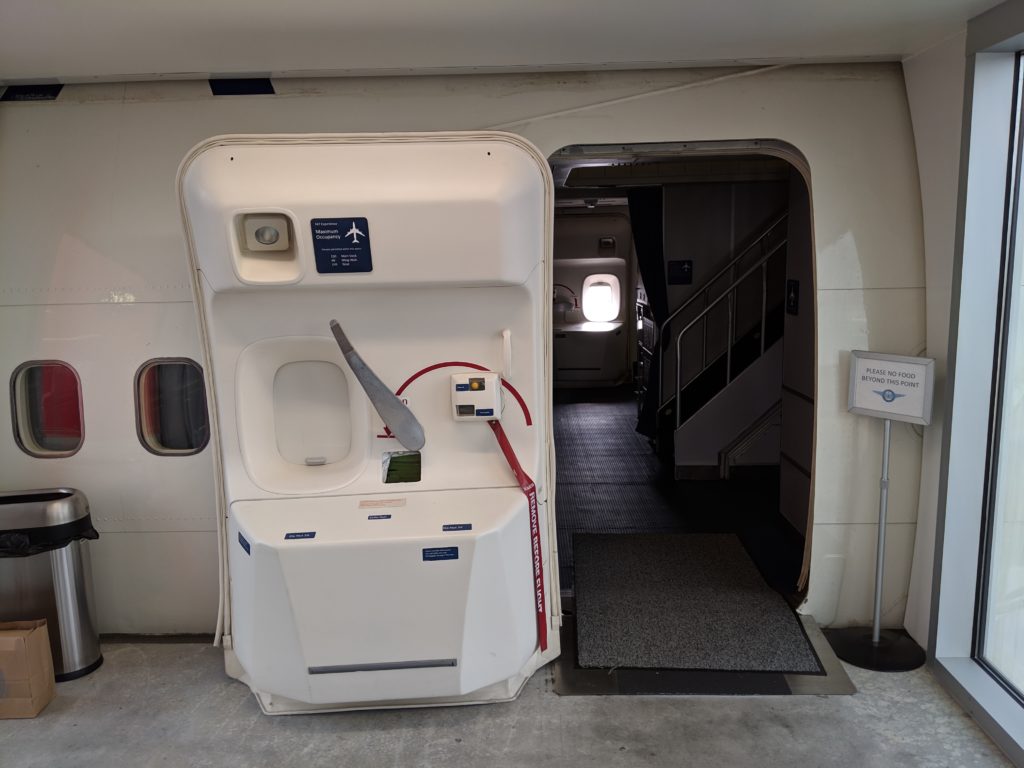
Access to the aircraft is through a staircase (or elevator if you prefer) that connects to the main entry door for the aircraft. Admission is required for the aircraft, but you can either pay at the door or pay as part of a day ticket for the museum.
Once inside the aircraft is configured in two sections: the forward portion is preserved with the cabin seating it had when it retired, and the rear section is open for visitors to get a feeling of how big the aircraft actually is.
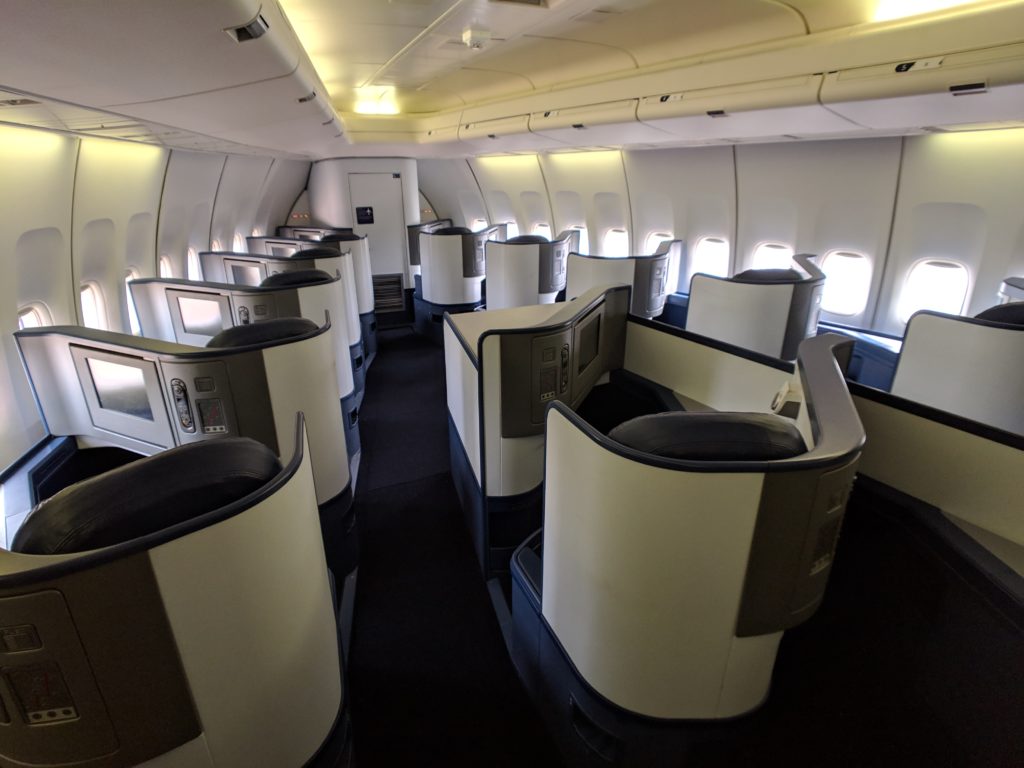
Moving to the front of the aircraft the Delta One First Class seats are still installed and in pristine condition. This 747 flew its last revenue flight in 2015, so while it might not be the latest and greatest generation of Delta’s first class accommodations it certainly isn’t as outdated as you might expect.
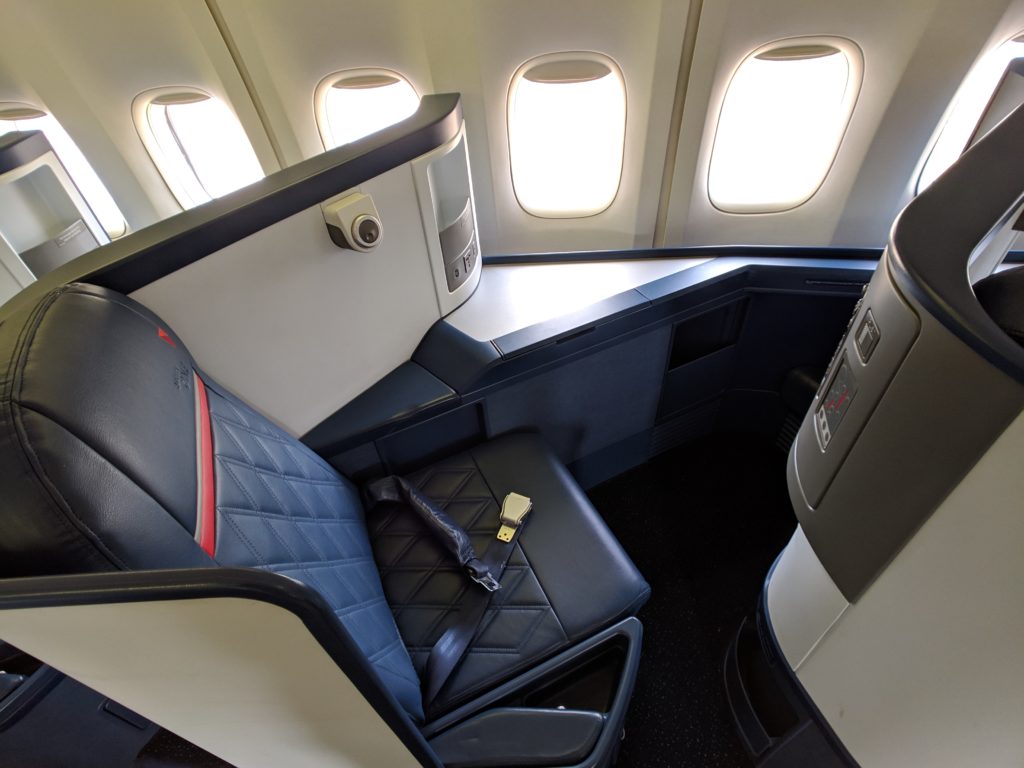
While the seats and the equipment are installed the IFE devices and the motors for the seats have been turned off, probably partly to preserve them and partly to save money on energy. Seat 1A here is configured in a standard upright position, but other seats throughout the cabin have been put in the lay flat position for those wanting to give it a try.
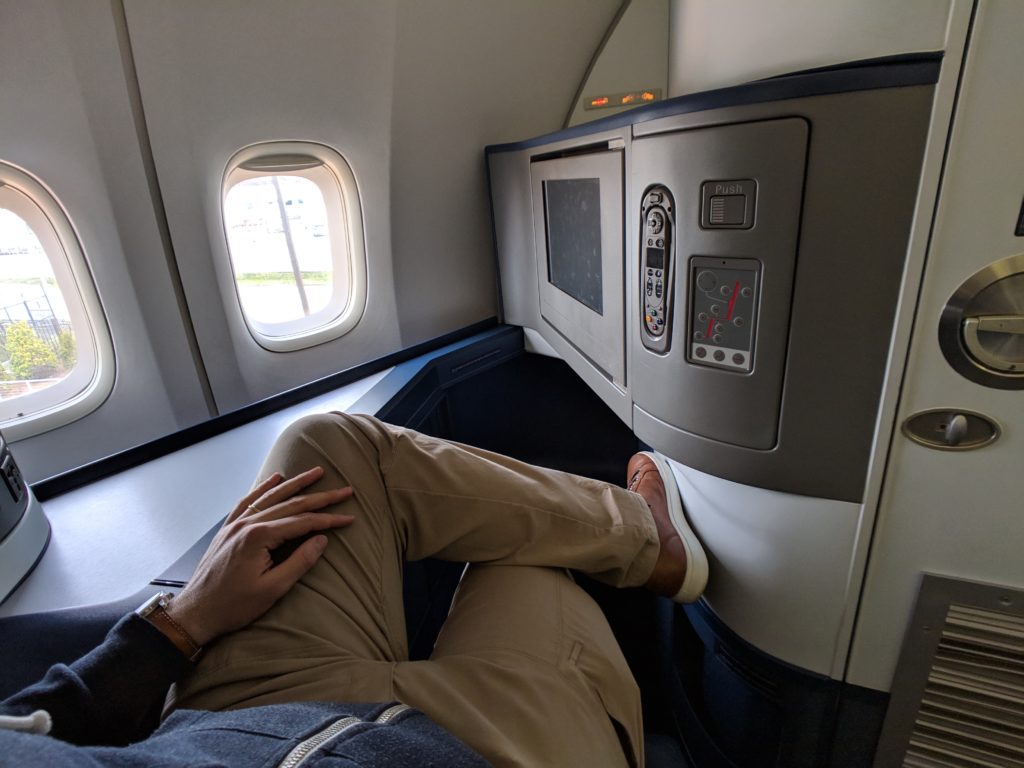
I may never have sat here on a Delta flight (I did have one Atlantic crossing in seat 1A in a Tower Air 747 when that was a thing), but it sure is comfortable even sitting on the ground.
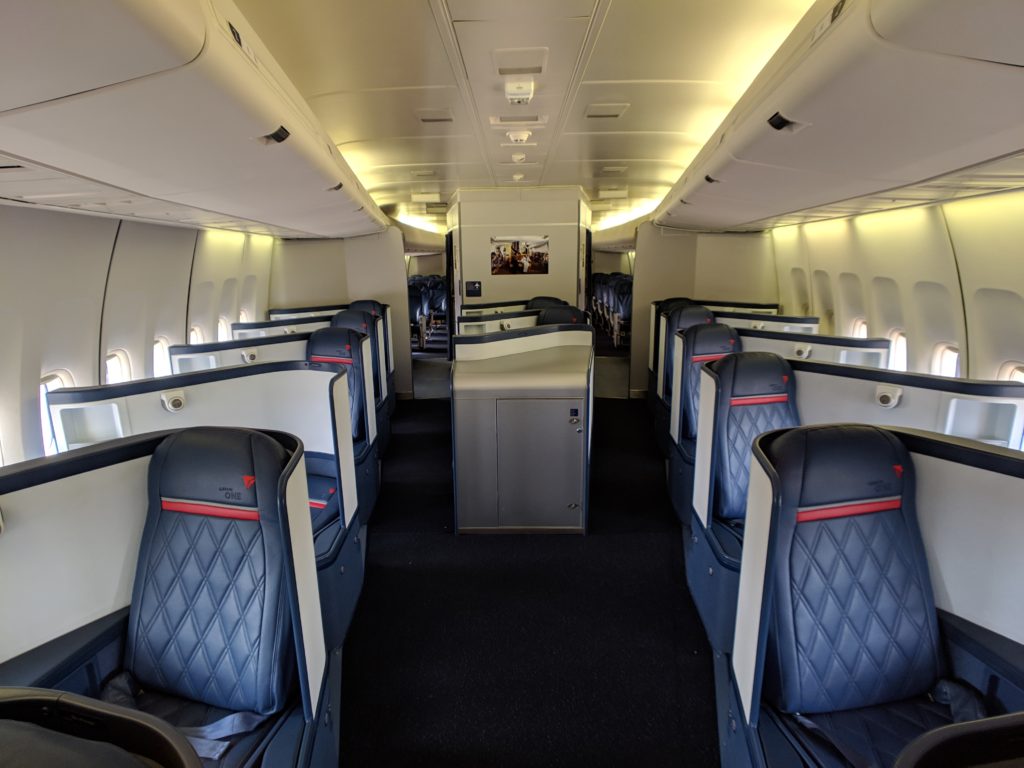
It’s interesting to see how the Delta first class offering fit into a strange cabin like this one. The cockpit on the 747 is located on the second level specifically so that the main deck would be unobstructed for the cargo variant of the aircraft, and as a result the passenger compartment up here tapers rather dramatically. In the forward section there’s only room for two seats side by side, but as the cabin gets wider there’s a third seat awkwardly slipped into the middle.
Back in the old days that center location would have a projector for a movie screen or just a couple rows of over stuffed chairs for first class, but with the extra room needed for the lie flat seating that’s all you get these days.
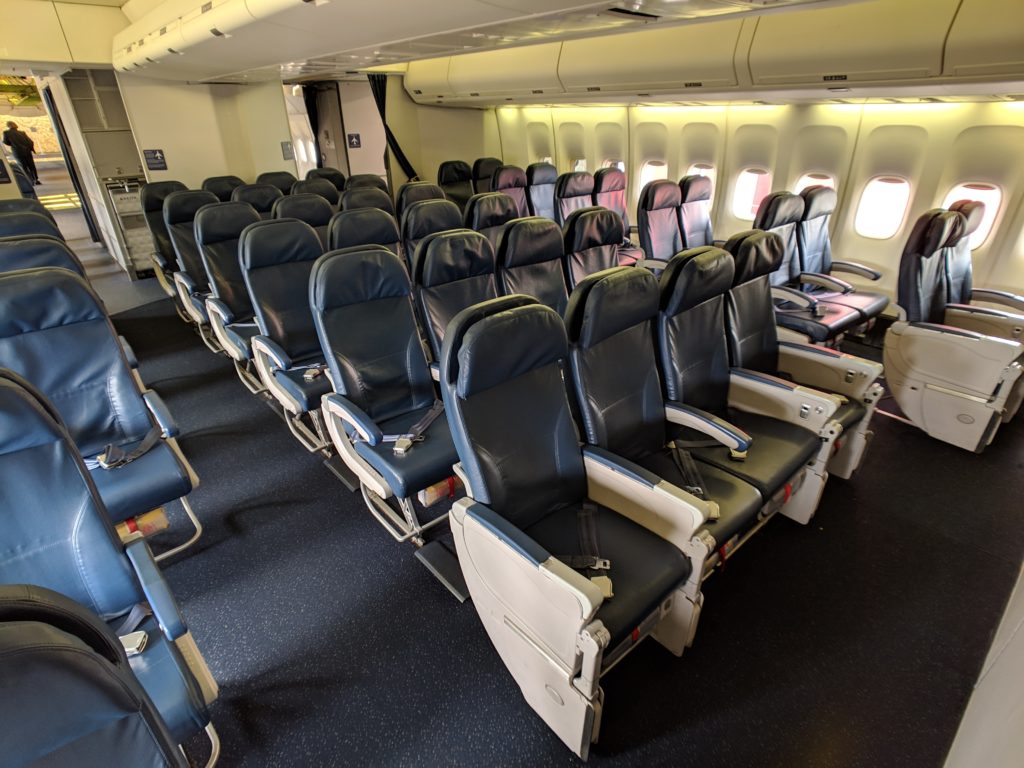
Behind the bulkhead is the economy cabin. These were the days before the Comfort+ concept was introduced, and economy was just economy.
This was what the 747 was built for: providing trans-Atlantic long haul travel for the masses. Putting enough seats in a single airplane that the unit cost of each seat was reasonable enough for any American to afford. And boy did they cram them in. This cabin sports a 2x4x2 configuration, but nerds will note that the final incarnation of this aircraft offered a 3x4x3 configuration to make it even more cramped.
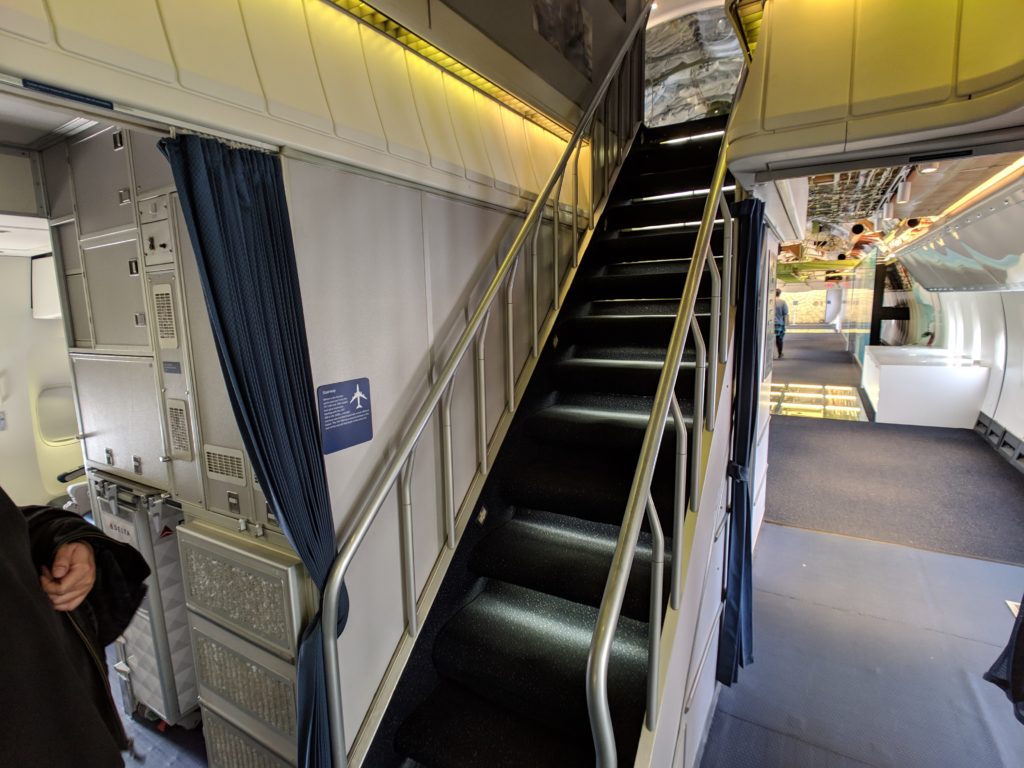
Up the stairs in the back and there’s even more first class in “the hump.”
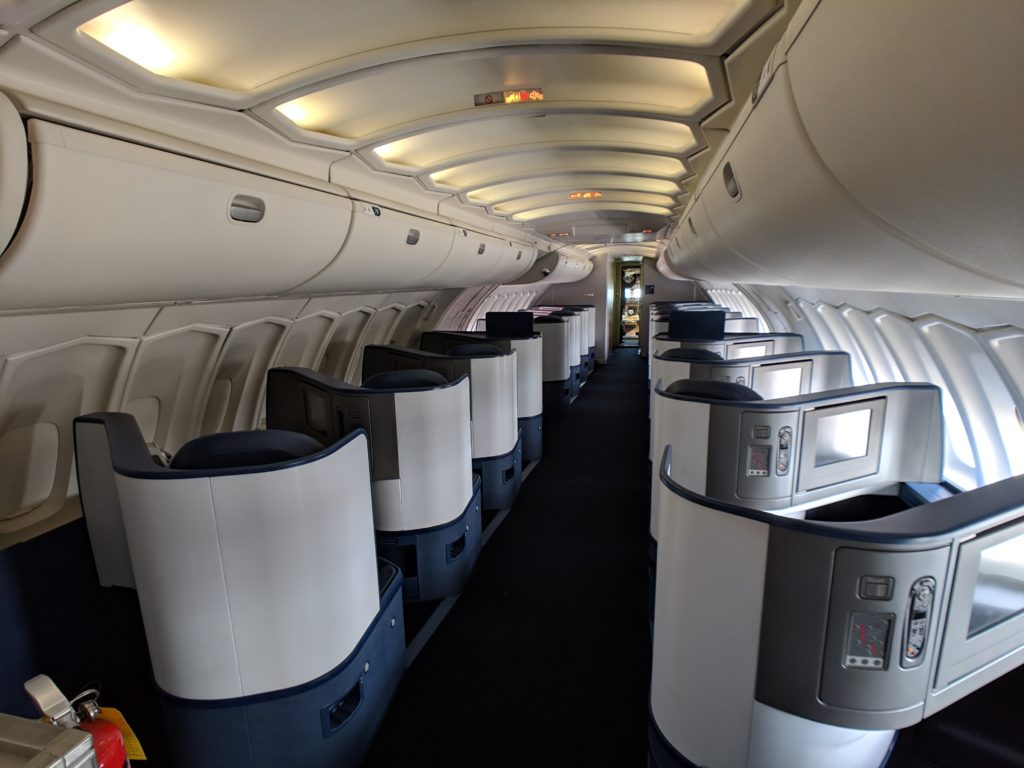
The debate rages on as to whether it’s better to fly in the nose of the 747 or in the hump. The nose offers better views from seats 1A and 1B and more breathing room, but there’s something to be said to be cruising 15 feet higher than the rest of the jet.
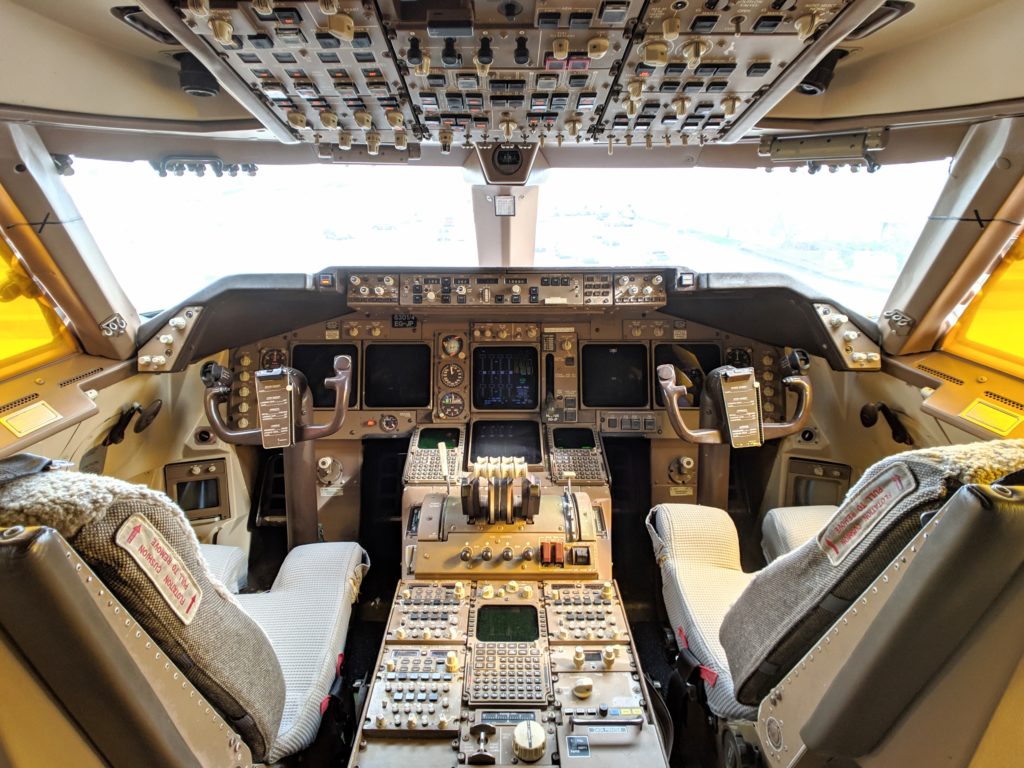
Up front the cockpit is open for visitors to take a peek. Most of the instruments are powered down, but there’s a radio tuned into the local tower frequency to simulate the radio chatter that could be heard up here and it looks like the power distribution system for the aircraft is being used to provide electricity on board (as seen on the center console). The fuel gauges all read zero, but it feels like all this aircraft needs is a fresh tank of gas and it can lift right back into the sky.
This is where I want to spend a minute touching on the history of this specific aircraft. This plane, tail number N661US, was the very first Boeing 747-400 to roll off the assembly line. After being used as a test aircraft by Boeing it was sold to Northwest Airlines and placed into regular passenger service.
On October 9th, 2002, while operating as Northwest Flight 85 from Detroit to Narita, Japan, the aircraft experienced an event called a “rudder hard over” that caused it to disconnect the auto pilot and begin erratically veering off course. A piece of equipment in the tail had failed catastrophically and threatened to bring down the aircraft over the Pacific ocean.
For hours on end the Northwest Airlines pilots struggled valiantly in this very cockpit to fly the broken airplane back to Anchorage, Alaska. By using their skill, experience, and excellent teamwork they were able to successfully land the damaged airplane with no casualties whatsoever.
That flight is still taught to this day in flight schools around the world as a shining example of “Cockpit Resource Management” or CRM, the ability to use the combined experience of the crew to collaboratively handle a situation.
The airplane would go on to be repaired, and would be acquired by Delta as part of their merger with Northwest Airlines seven years later in 2009.
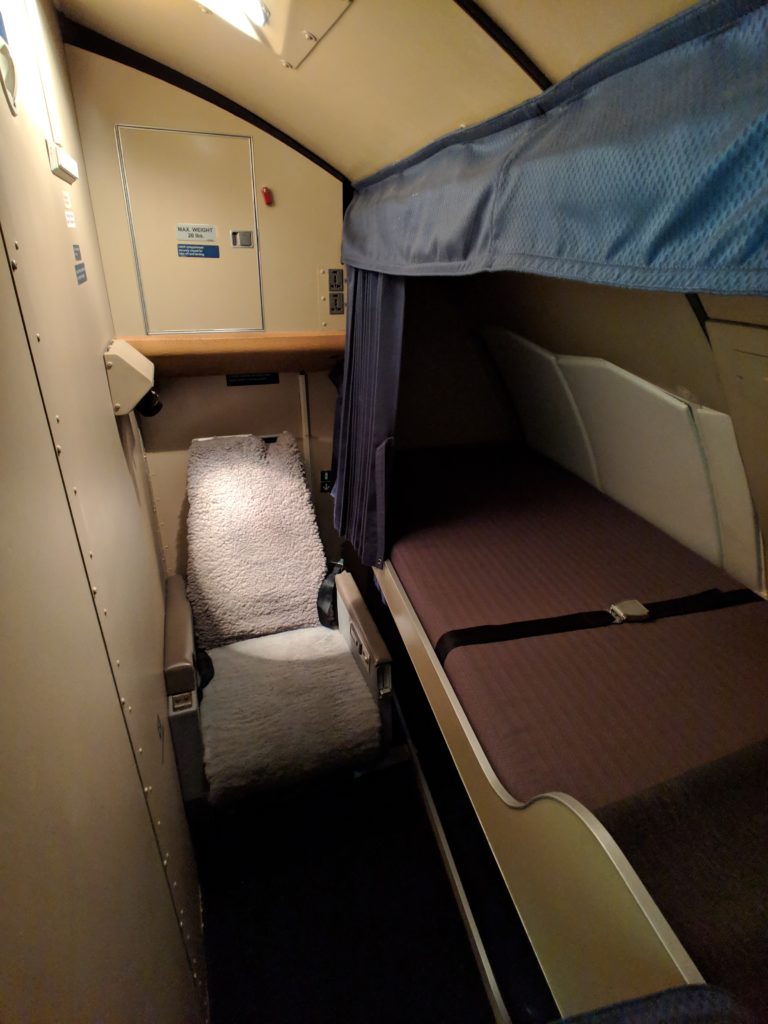
Moving back from the cockpit is one of the first areas that as a normal passenger you’d never see: the cockpit crew rest area. Designed for long haul flying, the 747 usually flew with a relief crew that would take over for the long boring stretches over the ocean while the actual captain and first officer snoozed in this cabin and rested for the landing. I’d heard about this compartment before, but I had never seen one before. It’s interesting to see how big it actually is given how space on an aircraft is usually at a premium.
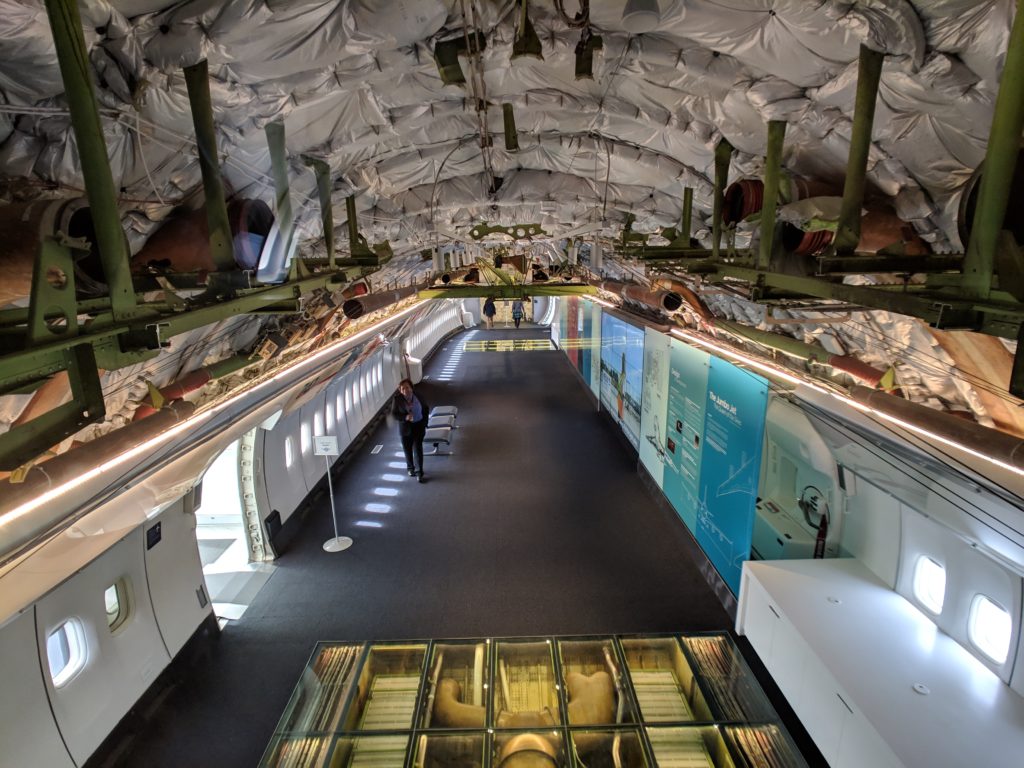
As you head back from the cockpit you’ll notice that there’s something not quite right with the rear of the cabin, and that’s because it has been stripped. Looking down from “The Hump” you can see the insulation that would normally be hidden and a significant number of the cables and wiring that ran throughout the aircraft.
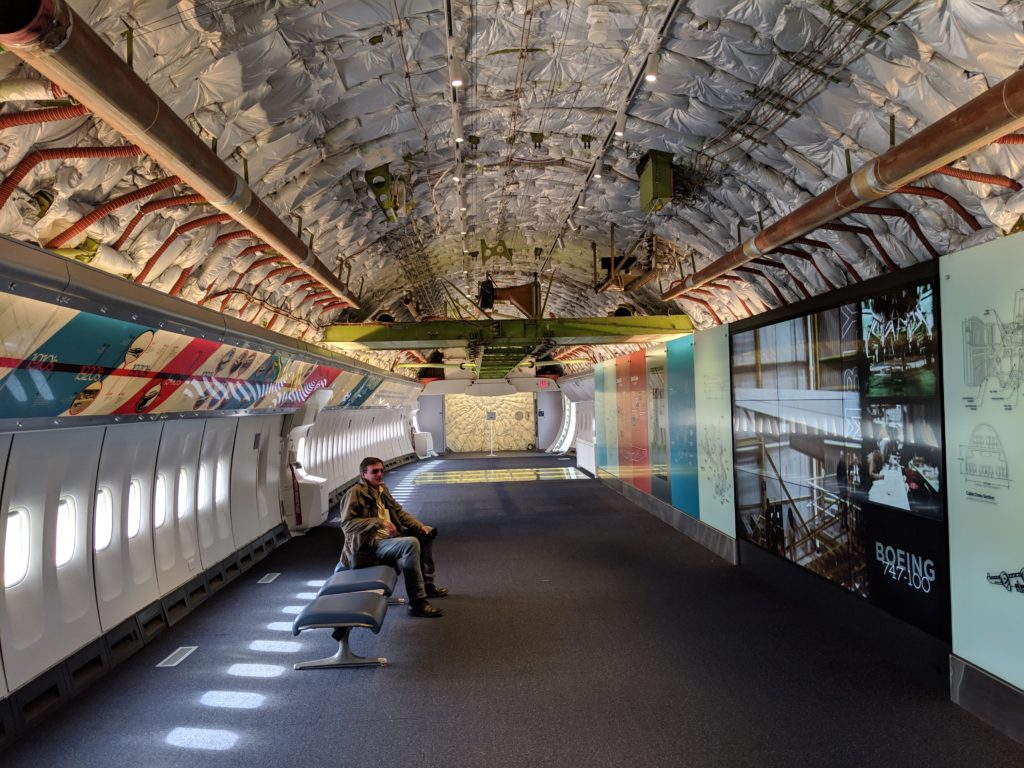
Back on the main deck the entire rear of the aircraft has been emptied, giving visitors a much better idea of exactly how big the aircraft is.
One of the better books I’ve read is Joe Sutter’s biography, the man who led the project to design and build this beast. He tells of a meeting where he needed to convince the management at Boeing of the impressive size and scale of the aircraft and that it would be a good gamble to build it as he had designed it. He found the biggest conference room he could get his hands on, measured it to be sure, and when the conversation turned to doubt that his dimensions would be as grand as he said casually mentioned that the cabin of a 747 would be as wide as the room in which they were sitting. For a company that (to that point) had focused on narrow bodied aircraft with cramped interiors it was a revelation, a momentous shift in scale and comfort. Everyone instantly understood the scope of what he was trying to do, and is design won the day.
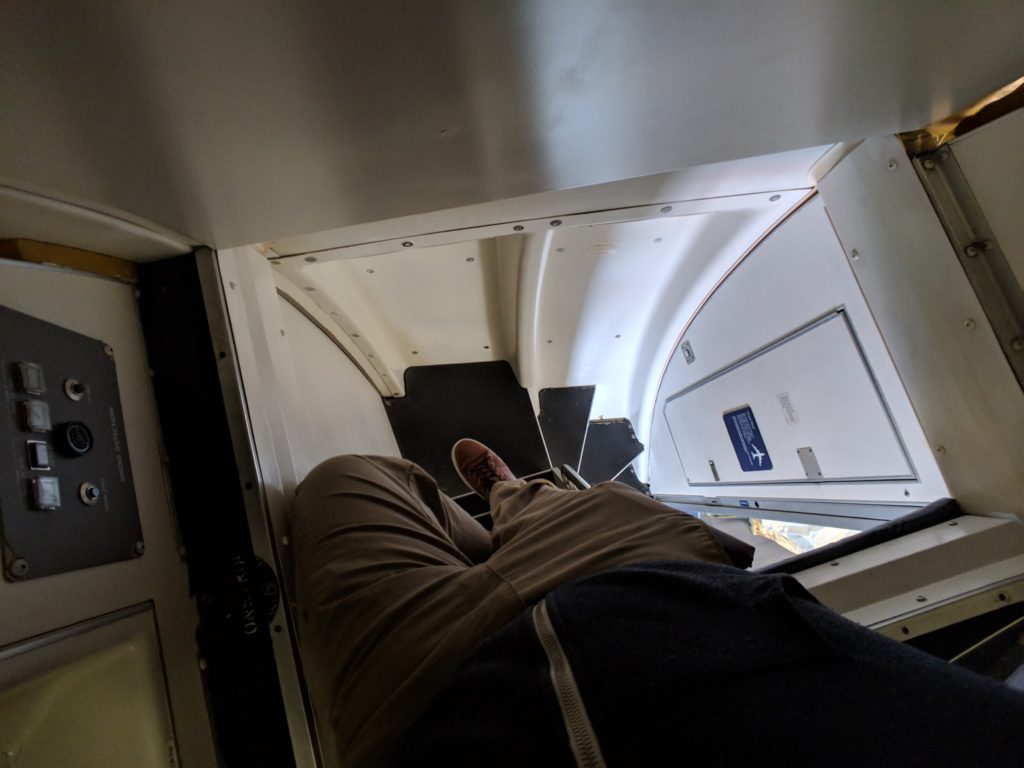
At the rear of the aircraft is another set of stairs, one that I had never seen in my time as a passenger.
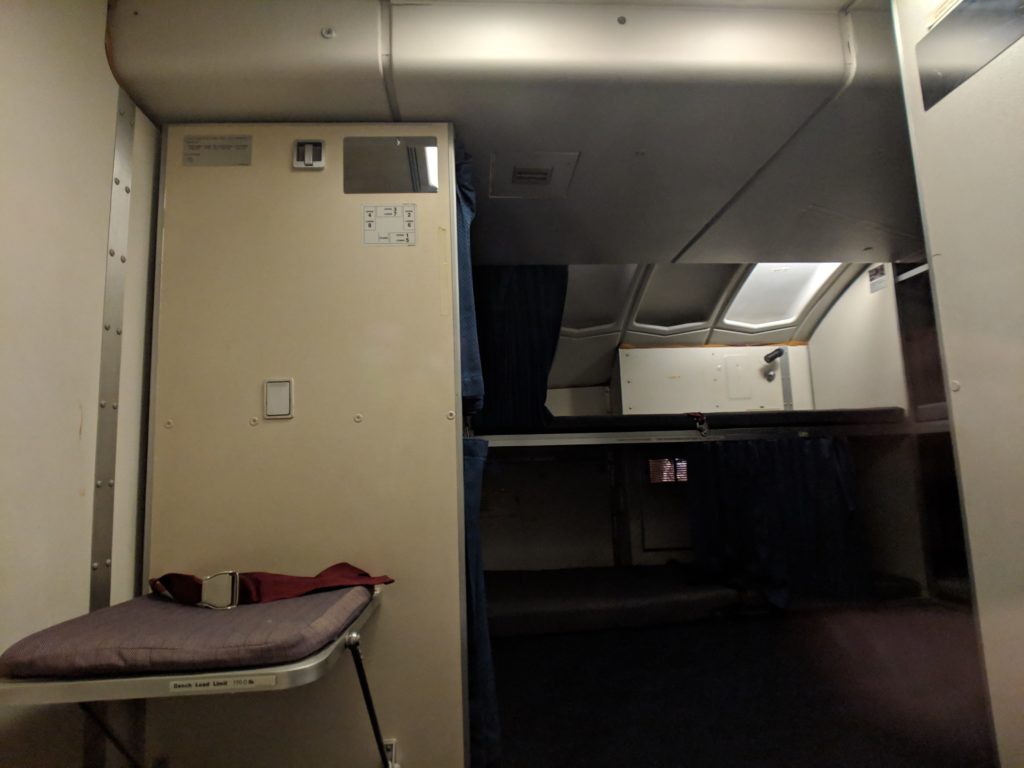
Up those cramped stairs was the cabin crew rest area, a surprisingly large and spacious area for the cabin crew to take a break and get some rest during their long and tiring shifts on long haul flights. I was slightly disappointed that visitors aren’t allowed to actually enter the room, but I can live with just seeing it.
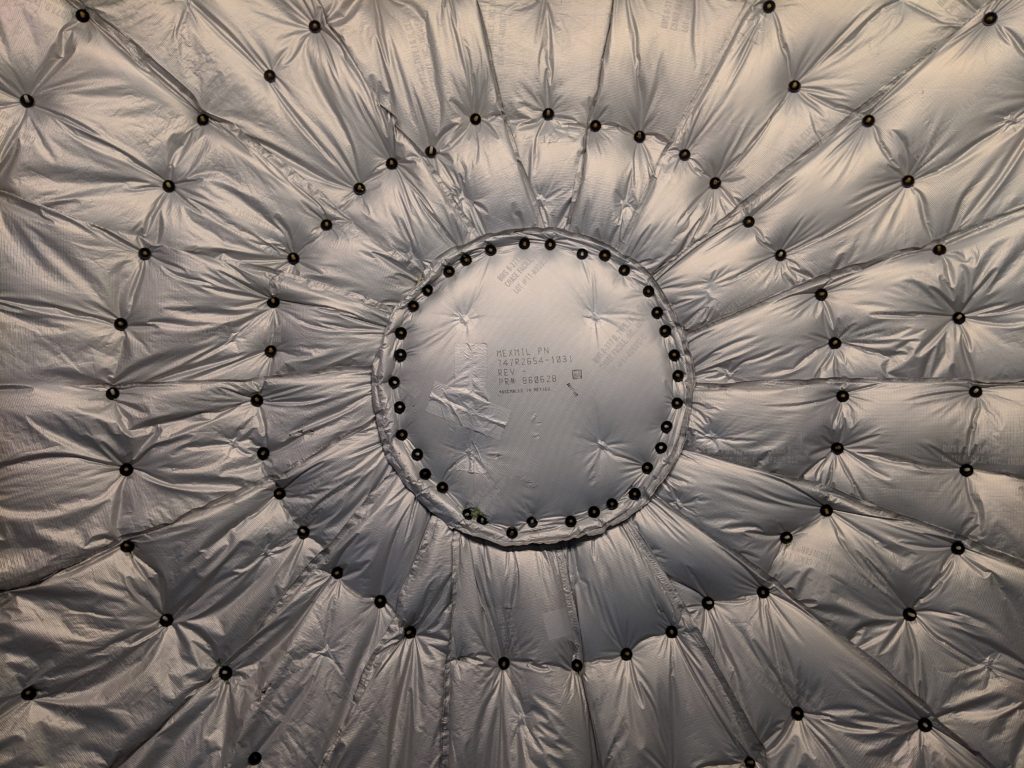
As you leave the aircraft the rear panels have been removed, revealing the massive rear pressure bulkhead. This finished off the pressure vessel that maintained a breathable atmosphere for passengers, and the absolute scale of this thing is incredible.
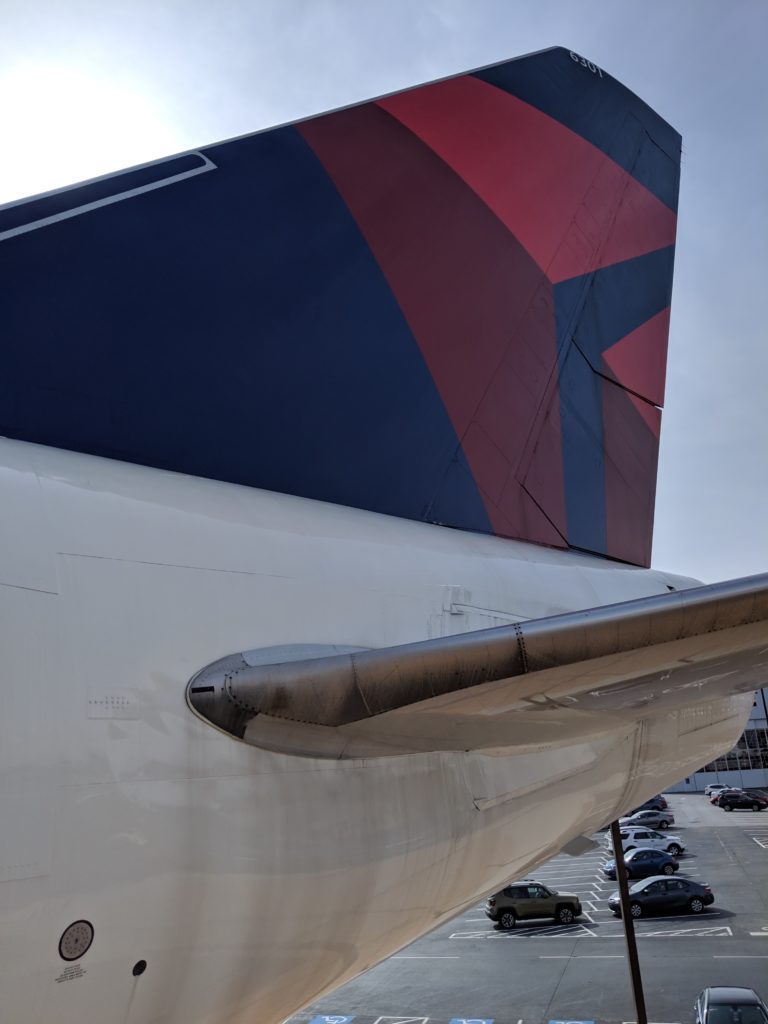
The exit from the aircraft is at the rear, and as you walk down those stairs you are treated to a great view of that tail. What’s remarkable about the engineering on this airplane is that the tail is split into two sections, a lower and an upper rudder. This design decision is what saved the lives of the pilots and passengers, when one of the sections experienced the “hard over” event the other section was able to counteract its effect. Without that design feature they would have been doomed like the passengers on United 585 and US Air 427 when their 737 experienced a similar malfunction with their single rudder.
There’s something amazing about the Boeing 747. Even standing on the ground its graceful design is pleasing to look at and the engineering it took to lift this city block into the air is astounding. The Delta Flight Museum in Atlanta, Georgia has done a remarkable job preserving this aircraft for future generations to experience the awe and the excitement that millions of people have experienced as passengers of this great aircraft as it slowly moves towards retirement.